Today’s English cottage garden features a charming jumble of closely planted perennials, annuals, and bulbs. Although English cottage garden flowers are now chosen mostly for ornamental purposes, the traditional cottage garden had a more practical approach.

Historically, an English cottage garden would include a mix of vegetables, fruit, and even bees and livestock alongside edible and medicinal herbs and flowers.
This humble, tightly clustered style came about because cottagers had small plots to work with and so packed in many different things to make the space as productive as possible. When the Elizabethan era brought greater prosperity, cottagers began to add more flowers, though most still had a practical purpose.
English Cottage Garden Flowers
English Cottage Gardening: For American Gardeners, Revised Edition The key to creating a classic English cottage garden is lots of brightly colored, self-seeding flowers that will spontaneously pop up throughout the garden each year. Any plants will do, really, as long as you choose a variety of colors and textures, take an informal approach to planting, and tuck in as many as possible. One benefit of this garden style is that the tight plant spacing reduces opportunities for weeds to spring up.
The key to creating a classic English cottage garden is lots of brightly colored, self-seeding flowers that will spontaneously pop up throughout the garden each year. Any plants will do, really, as long as you choose a variety of colors and textures, take an informal approach to planting, and tuck in as many as possible. One benefit of this garden style is that the tight plant spacing reduces opportunities for weeds to spring up.
For an authentic cottage garden, add a few herbs, fruit-bearing plants, and vegetables among the flowers. Either incorporate them all into the flower beds, creating mixed borders of, say, herbs and cabbages around an eclectic mix of flowers, or take a slightly more organized approach.
To do this, create patches. Plant berry bushes and rhubarb around a fruit tree or two for a fruit patch, perhaps throwing in some flowers or herbs for extra variety, and create a separate vegetable patch.
The vegetable patch used to be the hub of the cottage garden and might contain a seasonal mix of vegetables interspersed with herbs. Use companion planting techniques here, tucking basil and borage in among the tomatoes or nasturtiums alongside summer squash.
A three sisters garden, though of Native American origin, would fit in well with an English cottage garden vegetable patch: pole beans and winter squash planted underneath corn.
But it’s the flowers that take center stage in English cottage gardens today. Swapping cuttings and divisions with friends and neighbors is a great way to introduce new plants to your garden, though of course, you can purchase a few seeds, potted plants, and bulbs to get started.
To help you choose among the plethora of plants available, here is a simple guide to English cottage garden flowers, organized by perennials, annuals, and bulbs.
Perennial flowers for cottage gardens
1. Columbine (Aquilegia sp.)
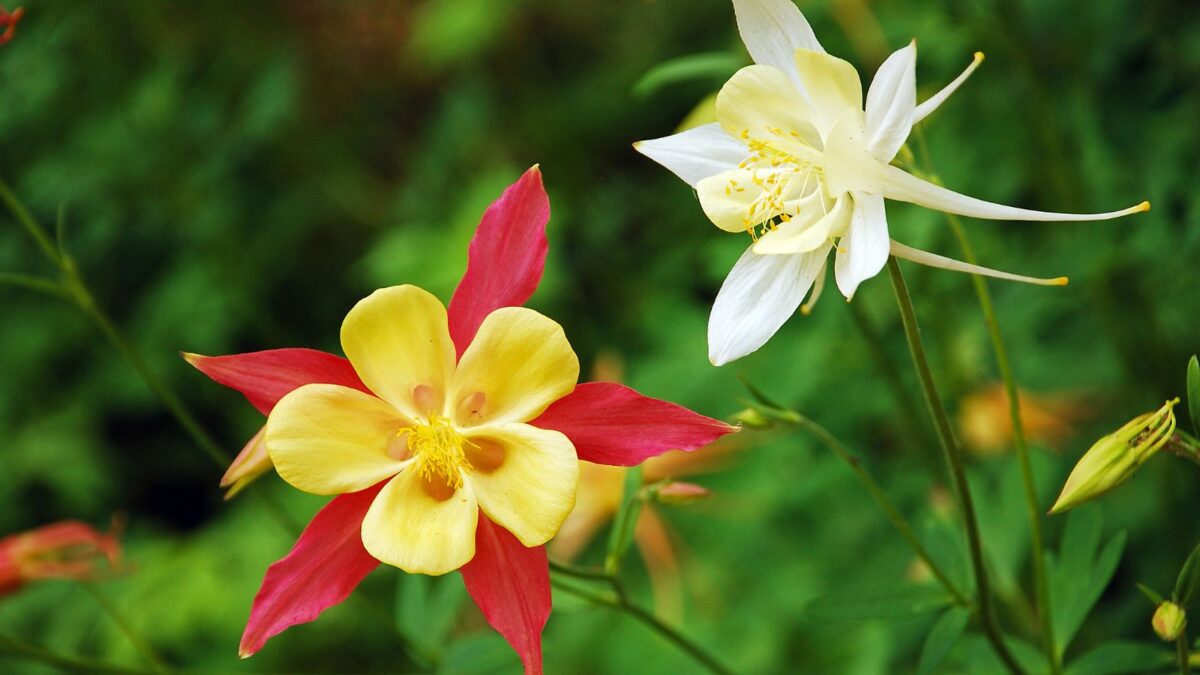
Also called granny’s bonnets or Aquilegia, these unique, bell-shaped flowers nod at the top of tall, slender stalks. Although common in cottage gardens, columbine is actually native to North America. They come in a variety of colors, namely white, yellow, red, and purple, and are often two-toned. Small, rounded leaves cluster loosely at the base of the flower stalks.
A shade-tolerant woodland plant, columbine flowers in early summer, filling the gap between early spring bulbs and showy summer blooms. It readily self-seeds and should be divided every few years.
2. Hardy geranium (Geranium sp.)
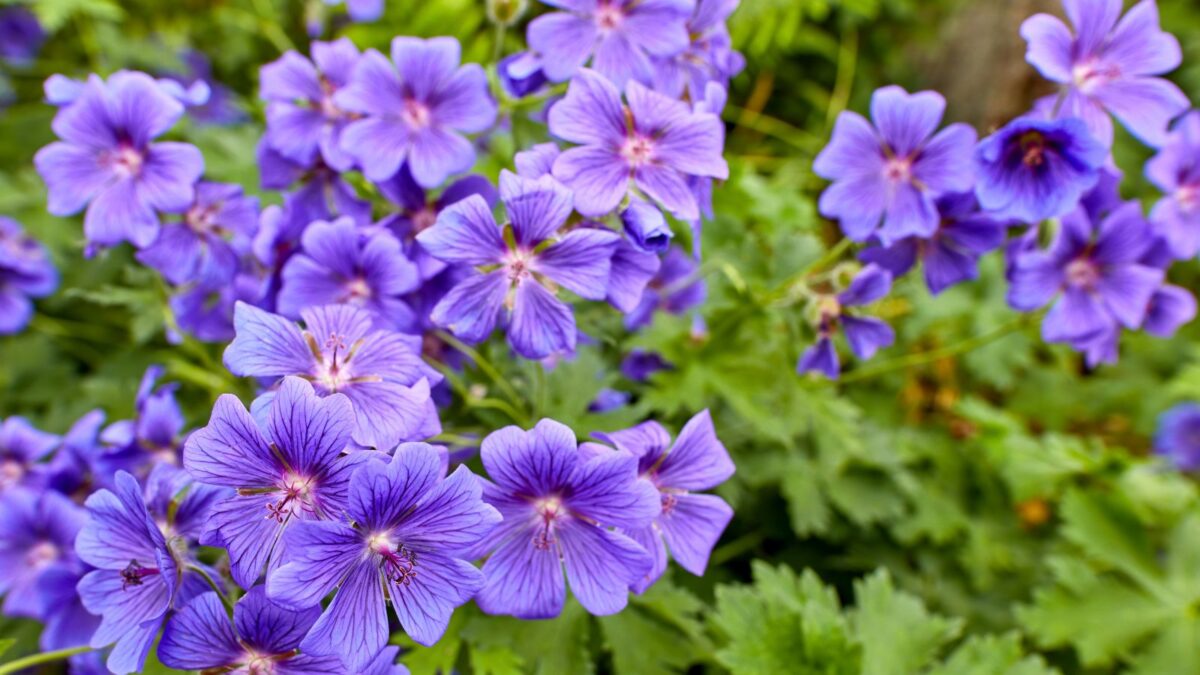
Hardy geraniums, or cranesbill geraniums, flourish in both sun and shade and, as their name suggests, are very easy to grow. They come in a range of colors, from white to dark purple, and readily self-seed. Although they require little to no maintenance, chopping them back after the first flush of flowers will encourage new growth and blooms until the first frost. They can also be divided in the spring.
Note that some geraniums can become invasive in the U.S. if the seeds spread beyond your garden, so be careful of which varieties you choose. Especially avoid herb Robert (G. robertianum), bloody cranesbill (G. sanguineum), dovefoot (G. molle), and shiny geranium (G. lucidum).
3. Phlox (Phlox sp.)
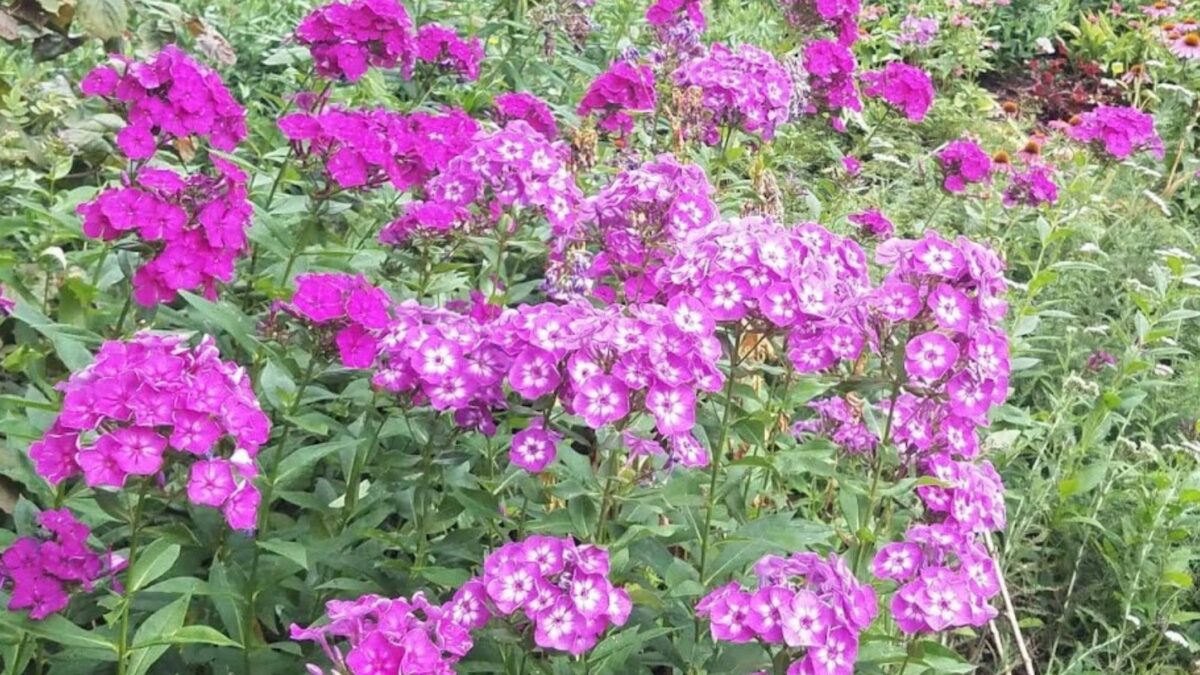
These sweet-smelling flowers attract bees, butterflies, and other pollinators. They come in a range of heights and mostly pastel colors.
Depending on the cultivar chosen, phlox will thrive in a variety of settings, as well, from full sun (alpine varieties) to partial shade (woodland varieties).
These low-maintenance flowers bloom in the latter half of the summer and work well as border plants.
4. Delphinium (Delphinium sp.)
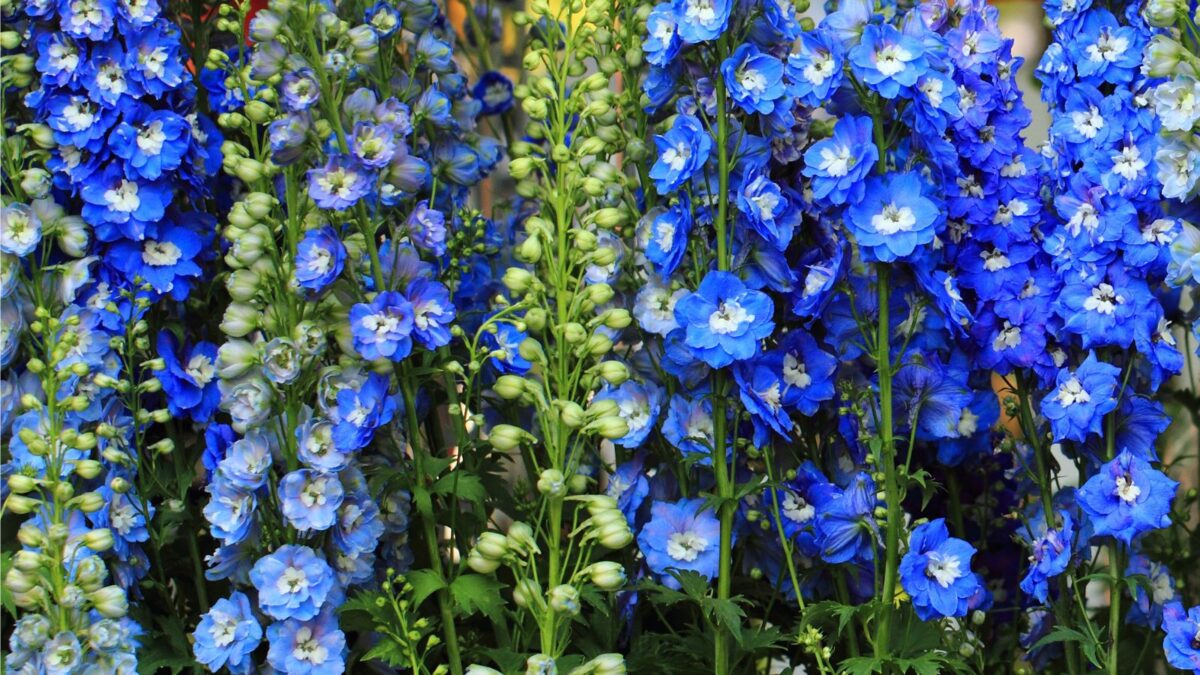
These tall, spiked blooms make great cut flowers but require staking to keep them upright. Some varieties can grow as high as six and a half feet!
Also called larkspur, this classic cottage garden flower prefers well-drained soil and full sun. Place toward the back of a bed and intersperse with complementary tall flowers like irises and peonies; these would look especially impressive along a fence or wall.
To encourage a second flush of flowers, cut back spent blooms. Delphiniums propagate best through cuttings or from seed.
5. Lavender (Lavandula angustifolia)

Although any lavender species will work well in a cottage garden, English lavender is perhaps the most fitting. This hardy species comes in a variety of cultivars representing all lavender shades, from white to deep purple. Plant a few (learn more about planting lavender)along a path to enjoy the calming fragrance as you brush past, and dry the buds to use in sachets, teas, and body products.
Lavender requires well-drained soil and full sun, though it will tolerate a bit of shade. Propagate cuttings in late summer, and prune in mid-August or after flowering to avoid leggy plants with few flowers.
6. Peony (Paeonia sp.)
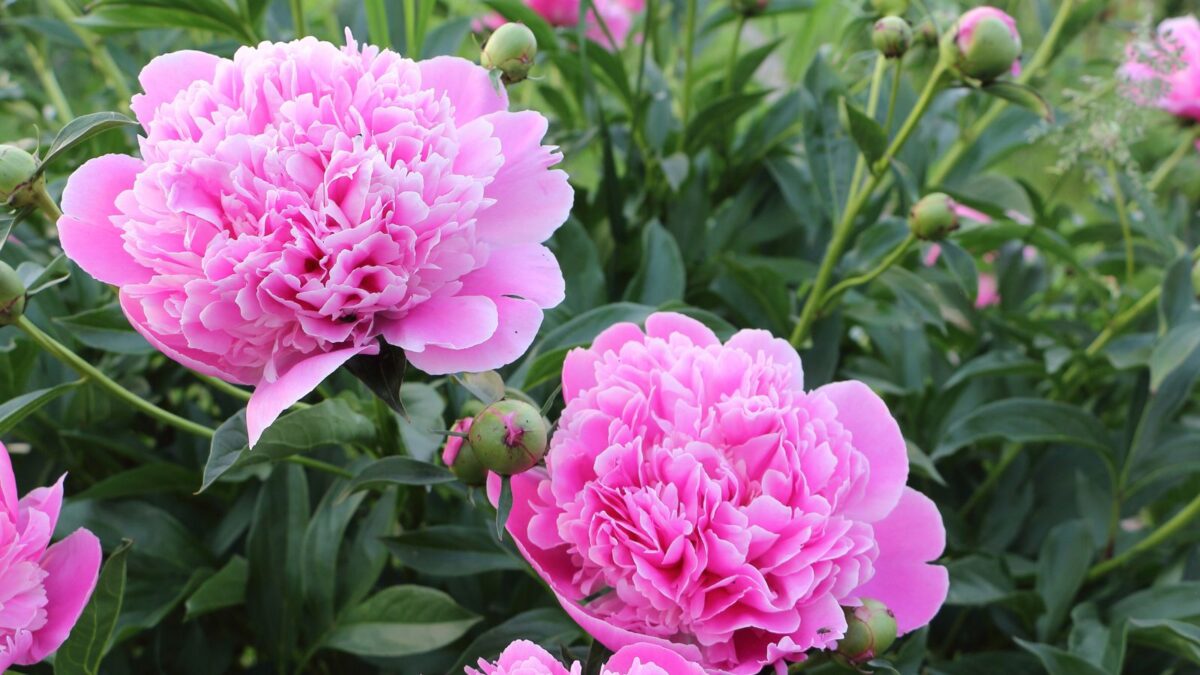
These lovely, voluptuous flowers come in a range of pinks, as well as white and red. Herbaceous types will die back in winter, while tree peonies, being small shrubs, keep their woody structure. Plant in full sun, and be prepared to provide support for types with exceptionally large, heavy flowers.
Herbaceous varieties should be cut back to the ground in autumn, at which point they can also be divided if desired. On the other hand, tree peonies do not require pruning and are best propagated through layering.
7. Rambling Rose (Rosa sp.)
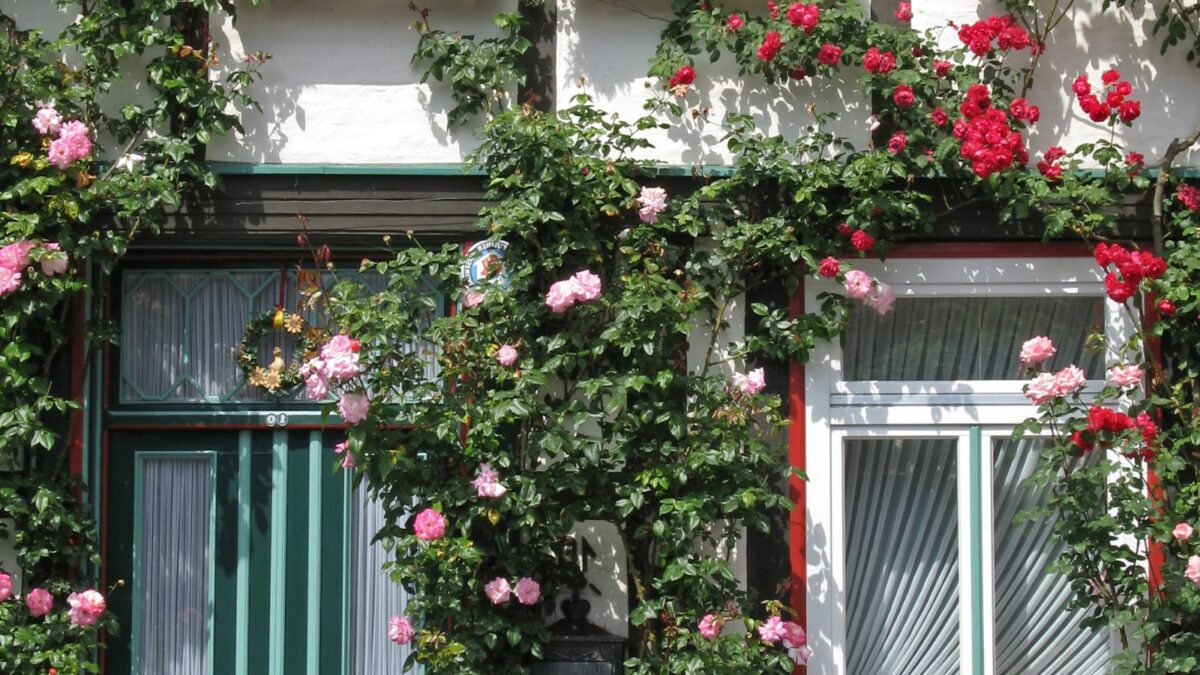
As with lavender, any rose variety makes a beautiful addition to a cottage garden. Rambling roses, however, are perfect for disguising unsightly outbuildings or decorating a wall or pergola. For added interest, try growing one through a large tree.
Rambling roses produce clusters of small to medium flowers in midsummer, often followed by showy orange or red rose hips in the fall. Although most only flower once per growing season, a few rambler varieties flower repeatedly.
Annual flowers for cottage gardens
8. Sweet pea (Lathyrus odoratus)

The ornamental sweet pea is a hardy, fragrant annual with seemingly delicate blooms that will fill a room with their orange-honey-jasmine scent when cut and placed in a vase.
Although most varieties will grow up a trellis or fence, others have a bushier habit. Pick fresh flowers regularly to encourage the growth of additional blooms, and gather them in the morning when their scent is sweetest.
Plant sweet peas in a sunny location. If starting by seed, sow in early spring as soon as the ground can be worked or, in warmer climates, in late fall for early spring blooms. Sweet pea seedlings should be planted out after the last frost.
9. Cosmos (Cosmos sp.)
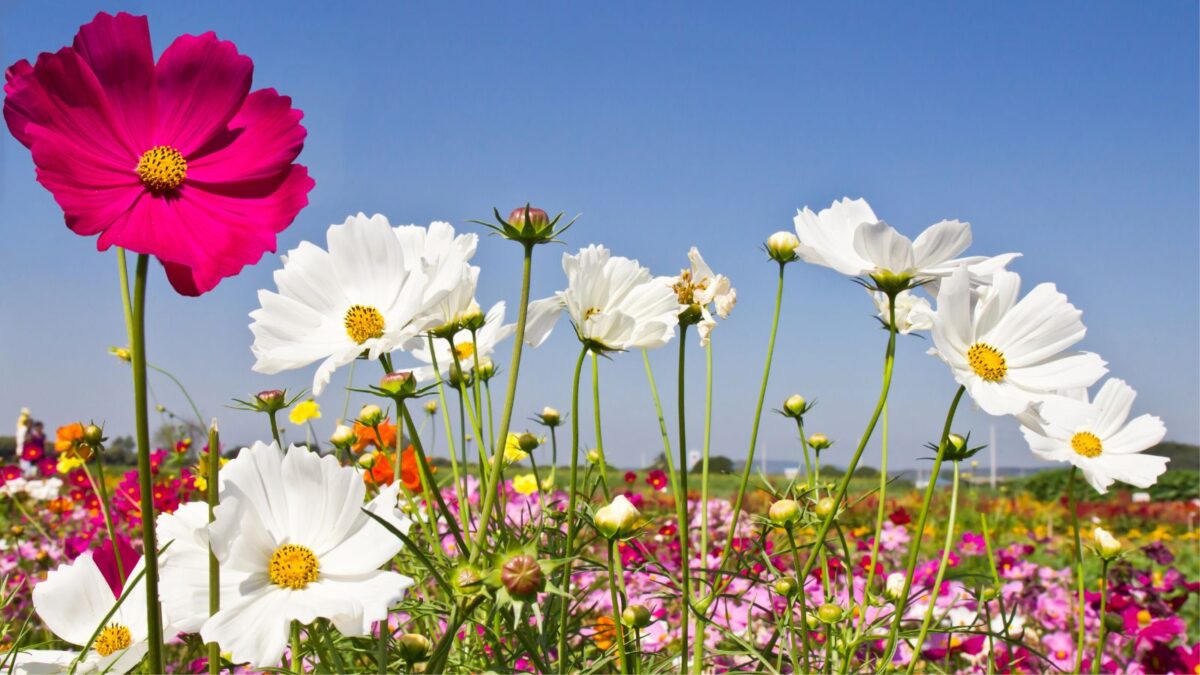
These bright, daisylike flowers are easy to grow from seed and perfect for cut flower arrangements. They prefer full sun but may appreciate afternoon shade in hotter regions, and though drought-tolerant, cosmos will produce more, larger blooms with regular watering.
As with sweet peas, cutting the flowers or pinching off spent blooms will also encourage more flowers. In warm regions, those that aren’t deadheaded will self-seed.
10. Field poppy (Papaver rhoeas)
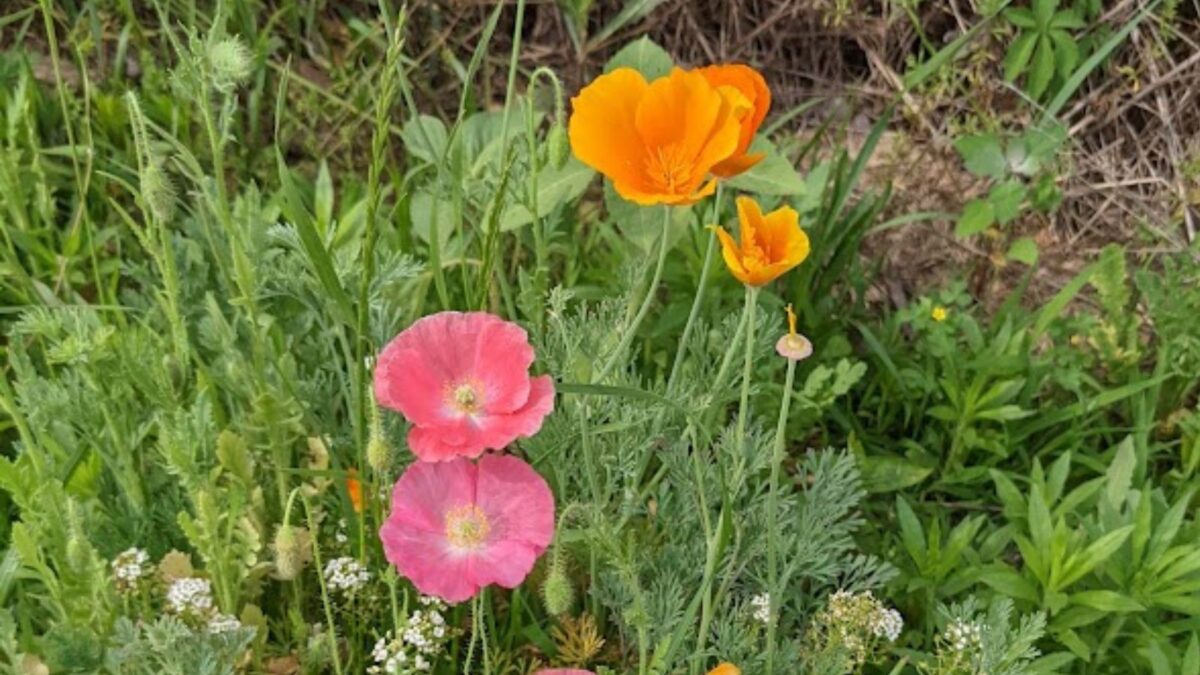
The field poppy, or corn poppy, produces red flowers in late spring. Sow seeds on the surface of well-drained soil in a sunny location, and take care not to overwater them.
Because poppies have tall, delicate stems, they should be protected from strong wind. If you want to harvest the seeds, gather the seed pods when they turn brown and rattle, placing them in perforated paper bags to finish drying.
For a native alternative, try the California poppy (Eschscholzia californica).
11. Pot marigold (Calendula officinalis)

Also known as calendula or English marigold, the pot marigold, with its vibrant orange, yellow, or peach blossoms appearing throughout the summer and into fall, resembles its cousin the true marigold.
These edible flowers contain anti-inflammatory triterpenes and antioxidant flavonoids and can be added to soups, salads, and teas. They also attract beneficial insects like bees and look lovely in a vase.
Pot marigolds prefer filtered sun or part shade, and true to their name, they grow well in pots. Deadhead to encourage continual flowering, and note that in favorable climates, pot marigolds may self seed if not deadheaded.
12. Nasturtium (Tropaeolum manjus)
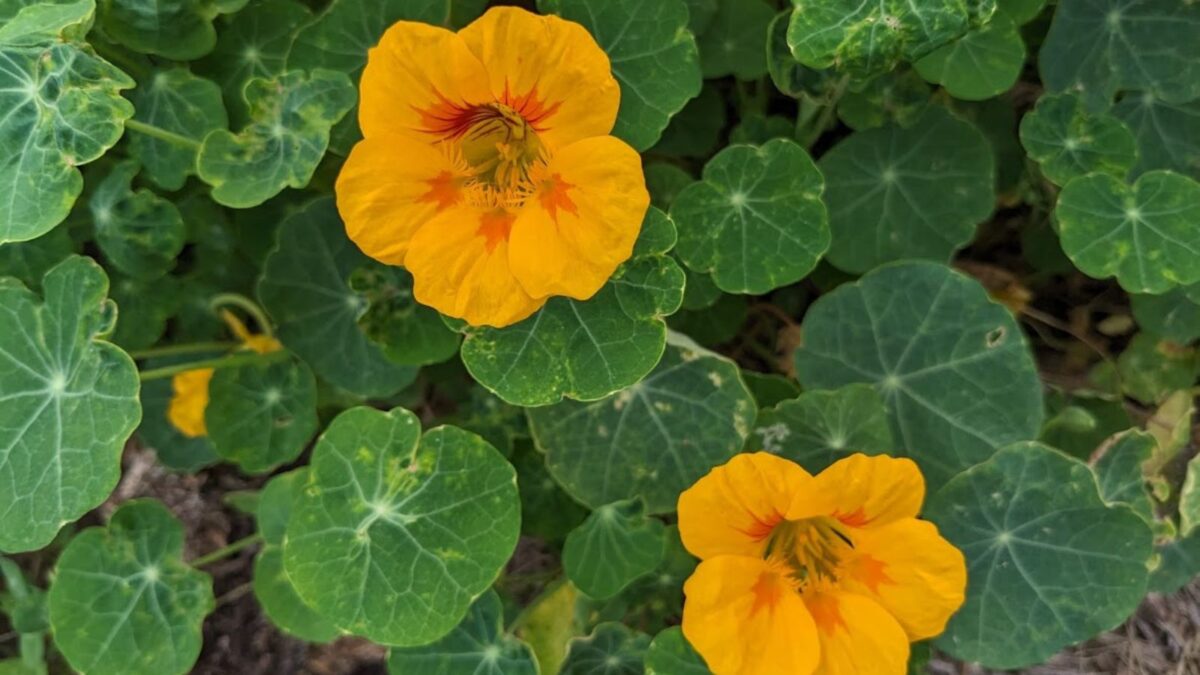
These peppery edible flowers are perfect companion plants for an English cottage vegetable patch, and they serve as an excellent showy groundcover as well. Enjoy them simply as an ornamental flower or add the bright orange and yellow blossoms — and the leaves as well — to a bowl of greens for a showy salad.
Although they tolerate partial shade, nasturtiums will bloom best in full sun. For best results, water regularly and remove spent blooms. The large seeds can be collected once they dry on the vine for sowing in the spring.
Bulbs for cottage gardens
13. Allium (Allium sp.)
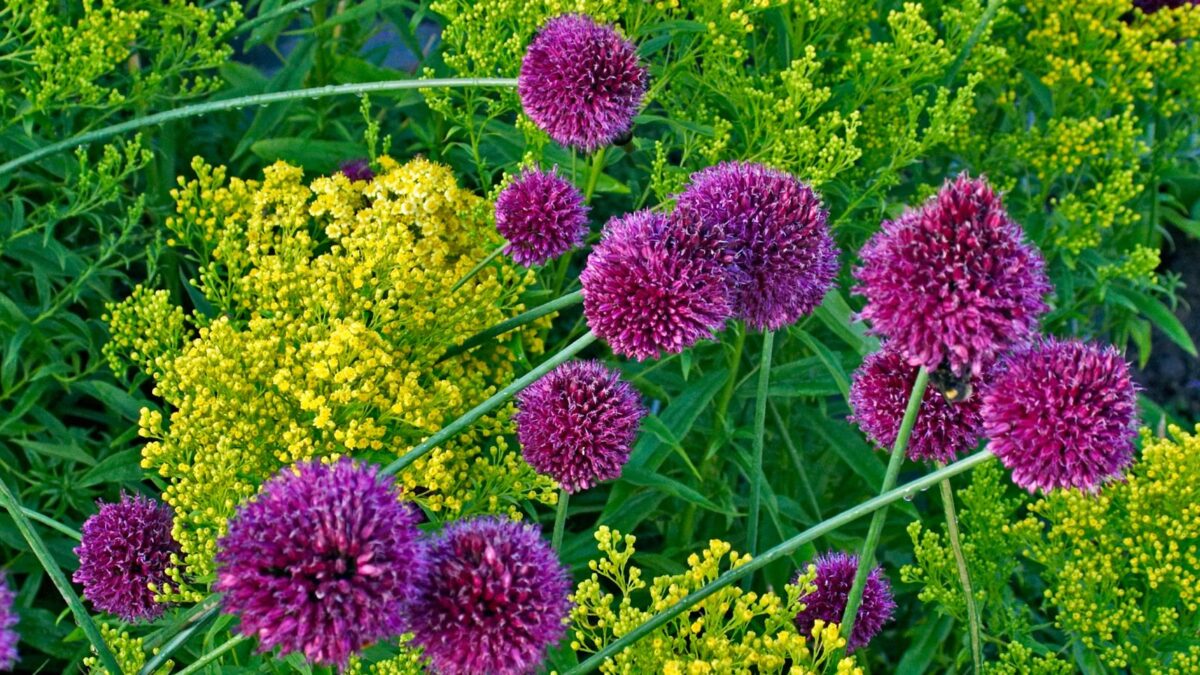
Although the first alliums grown in English cottage gardens were likely onions, garlic, and other edible species, the flowering, ornamental varieties are a stunning addition to modern cottage gardens. These unique, globe-shaped flowers often resemble pom-poms or even fireworks and can be found in nearly every shade of purple.
Plant alliums in full sun, and consider surrounding them with low-growing herbaceous plants to cover their unattractive strappy foliage. Allium foliage should be allowed to die back naturally.
14. Tulip (Tulipa sp.)
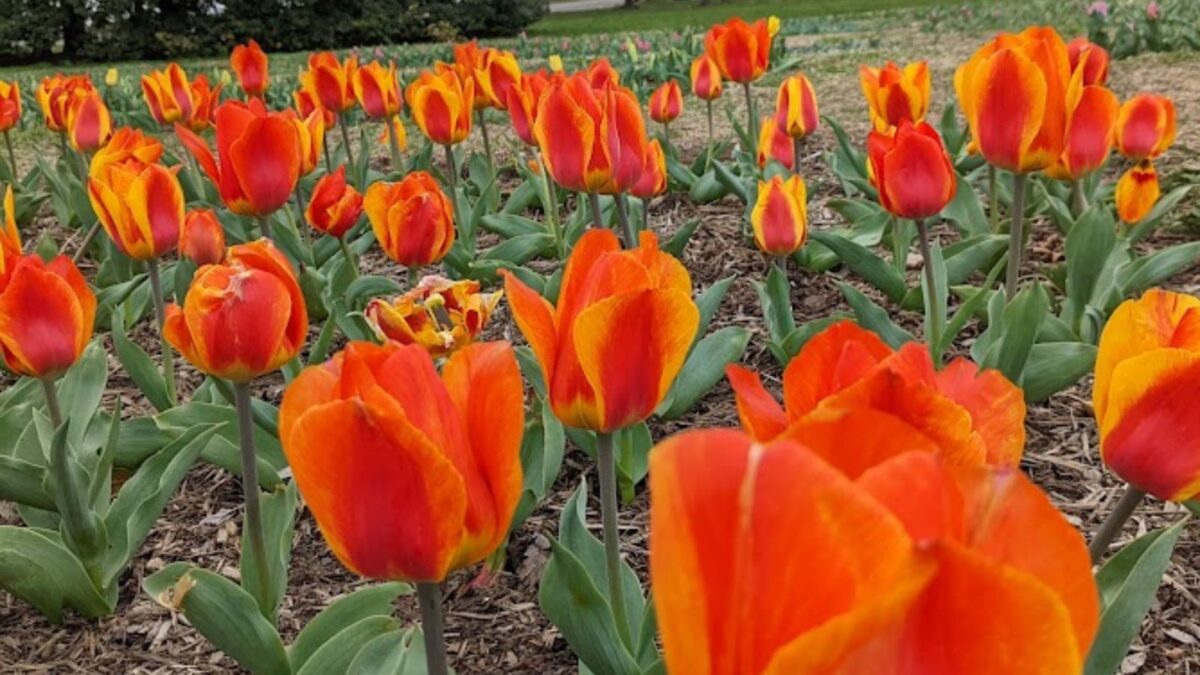
A popular spring flower, tulips are commonly grown around flowering trees and bushes, though they also look stunning in a mixed border of other spring flowers. Unfortunately, tulips are really only reliable for one year despite technically being perennials. To ensure blooms every year, dig up, or “lift,” the bulbs after the foliage turns yellow and store until fall planting time. Plant bulbs in November in a sunny location.
15. Daffodil (Narcissus sp.)
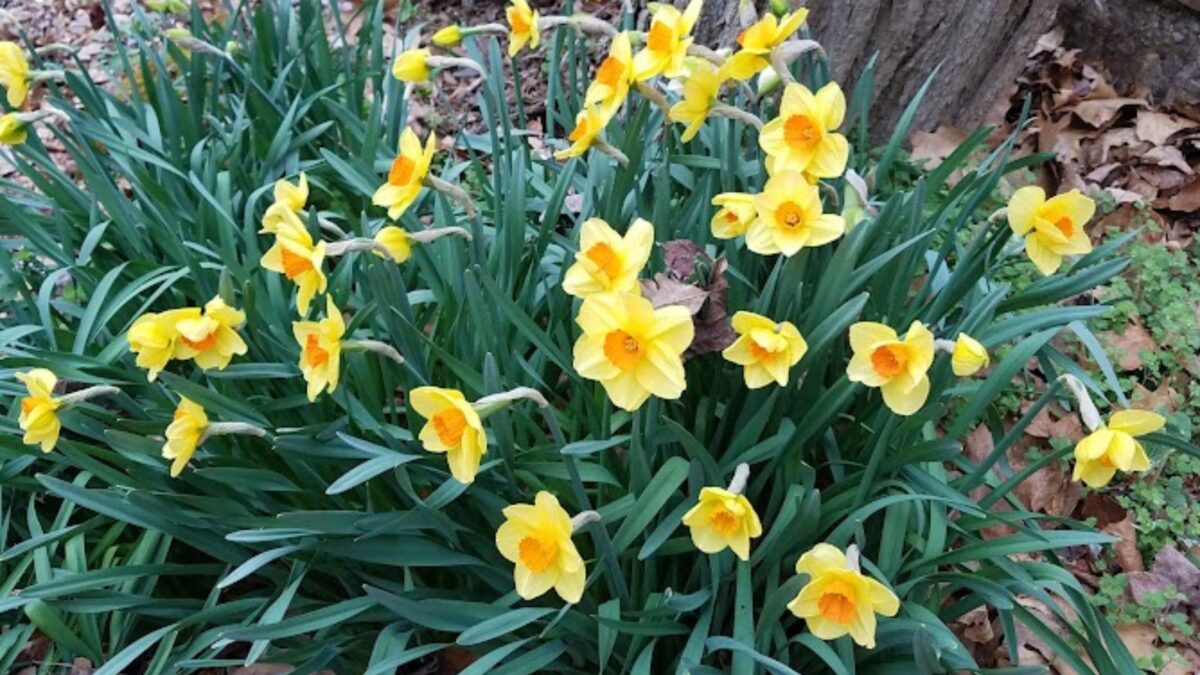
Daffodils are one of the first garden flowers to emerge each spring, bringing a cheery burst of yellow to the bleak winter landscape. Although they prefer full sun, daffodils will also tolerate light shade.
To spread the cottage garden style to the lawn, toss a few bulbs of a miniature variety in the grass and plant them where they land for a natural, scattered appearance. Whether in the lawn or a flowerbed, deadhead the flowers but leave the foliage to die back naturally.
Related: Yellow spring flowers
16. Iris (Iris sp.)
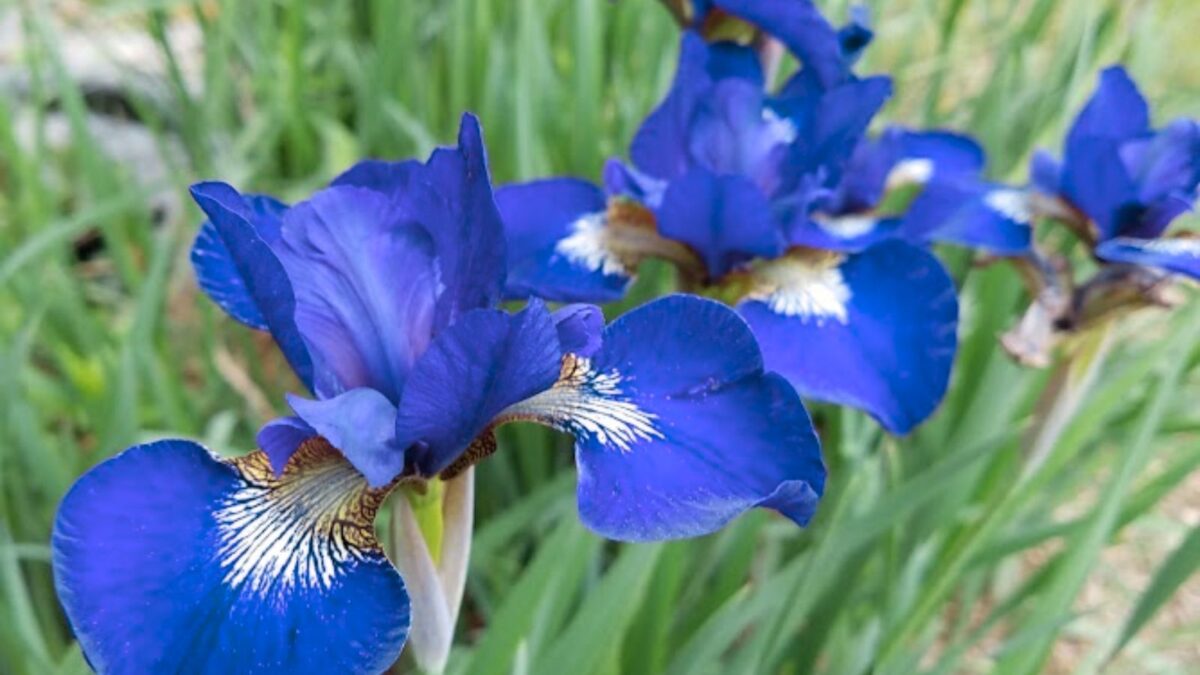
From six inches to five feet and from white to dark purple, irises come in a wide range of sizes, colors, and shapes. The bearded iris is the most common variety, though there are also beardless and aril, a desert variety with dark spots and distinct veins, as well as hybrid types.
Bearded irises, the easiest to grow, prefer well-drained soil and full sun, though they will tolerate filtered shade.
Iris clumps often become crowded over time, so it is recommended that you divide them every three to four years. Because they have a short bloom period, irises work well in cottage gardens, planted among other flowers that will cover up the foliage.
17. Daylily (Hemerocallis sp.)
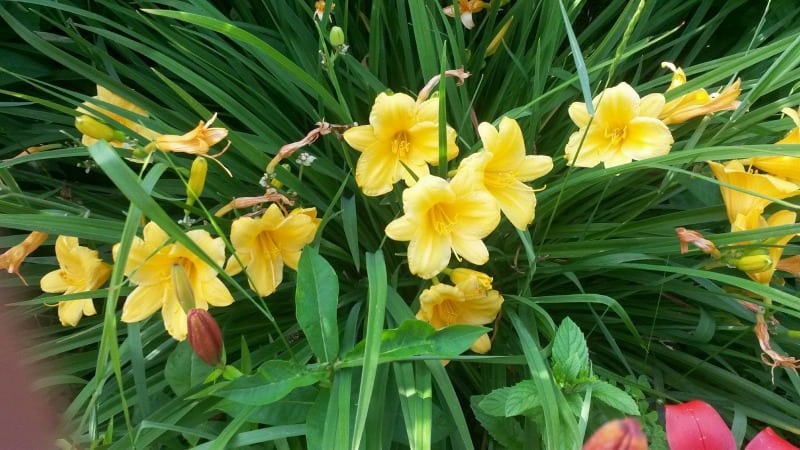
An Asian native, the daylily grew popular in Europe and North America due to its hardiness and low maintenance. Although the orange, or tiger, daylily, and yellow daylily have become the most common in the U.S., modern daylily cultivars come in a variety of colors.
Many varieties flower for only a few weeks, with each bloom lasting a single day. However, hybridization has led to late-blooming types and even some that rebloom.
Other plants for cottage gardens
Some excellent cottage garden flowers don’t fall neatly into any one of the above categories, and there are also many nonflowering plants that should be considered.
18. Hollyhock (Alcea sp.)
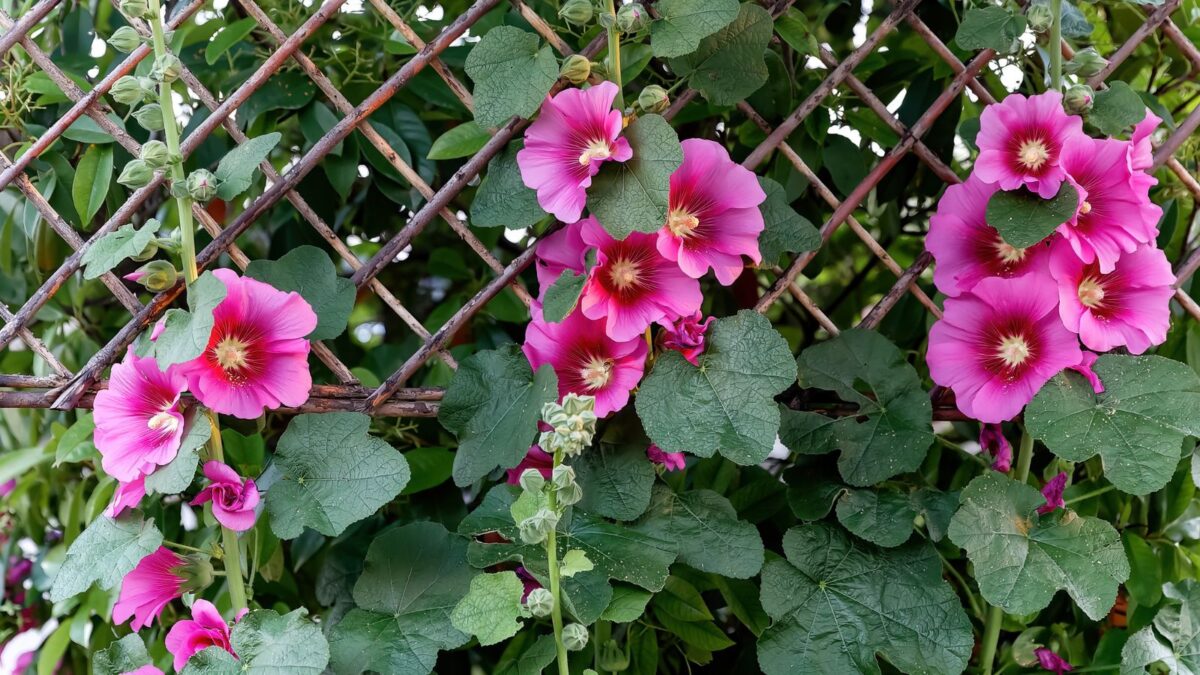
Technically a short-lived perennial, hollyhocks tend to be grown as biennials to reduce damage from hollyhock rust, a common fungal disease. Tall spires of vibrant, slightly cupped flowers give off a soft floral scent.
19. Rhubarb (Rheum rhabarbarum)
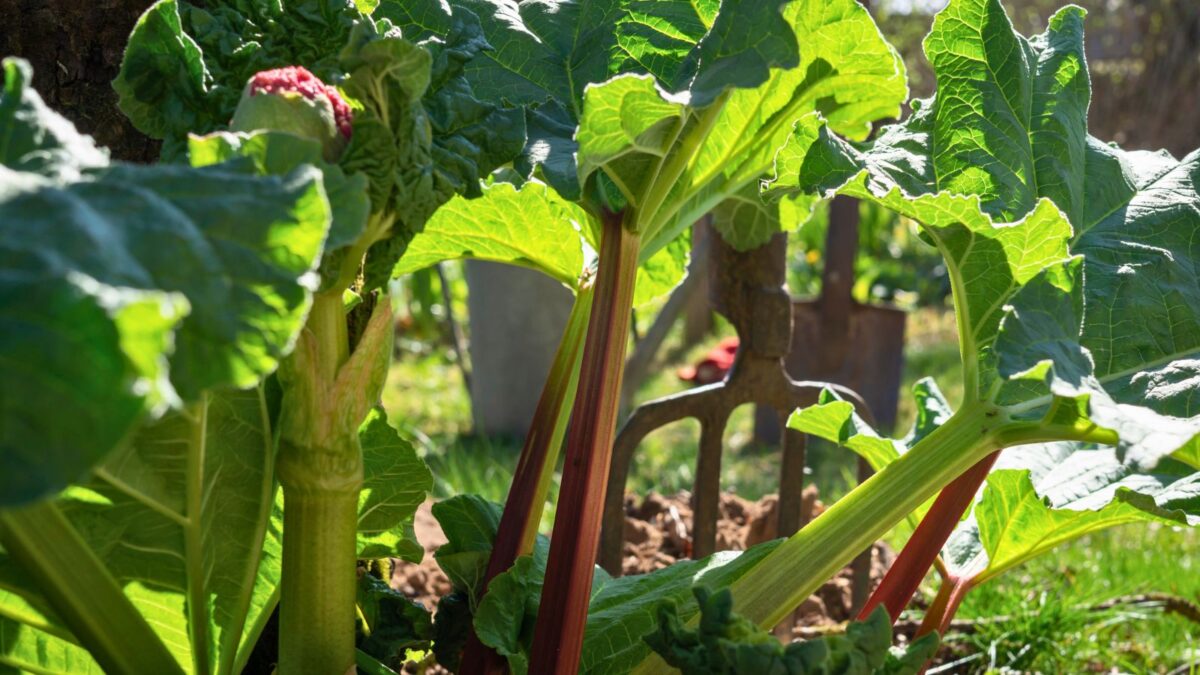
After the first year of growth, rhubarb stems can be harvested for several years, and the plant is easily propagated through divisions. Its large, heart-shaped leaves provide excellent groundcover under fruit trees and contrasting texture to cottage garden flowers.
20. Foxglove (Digitalis sp.)
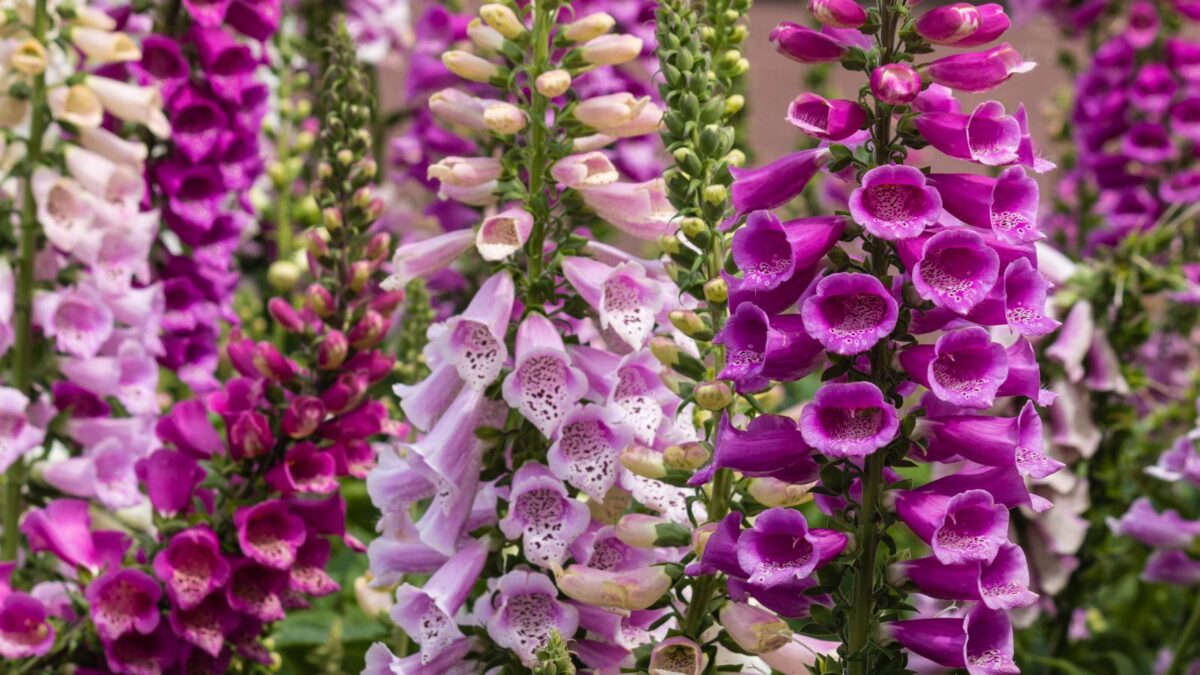
Most foxgloves are biennials, though a few perennial species exist. These popular cottage garden flowers have tall spikes of tubular blooms in white, yellow, pink, or purple that attract bees, butterflies, and even hummingbirds.
21. Apple (Malus domestica)
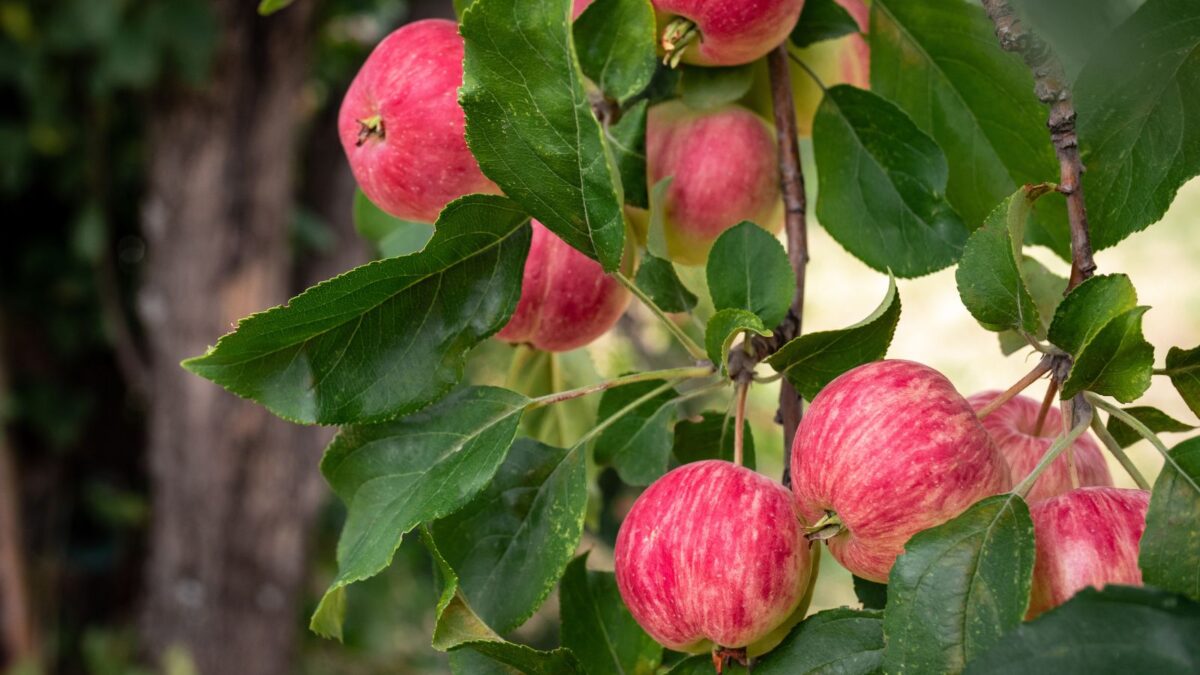
Apple trees serve two purposes in a cottage garden: providing shade and producing fruit. Plant two trees to ensure successful pollination, and note that dwarf varieties better fit smaller spaces and will produce apples sooner than standard types.
22. Lamb’s ear (Stachys byzantina)
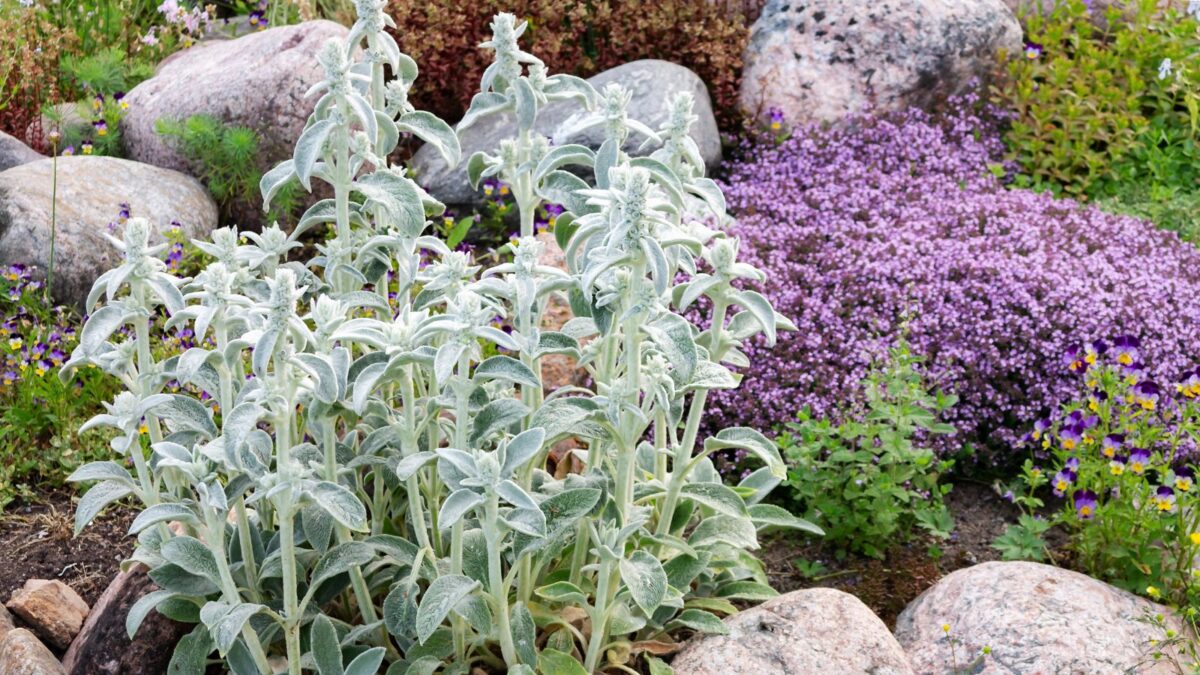
An herbaceous perennial, lamb’s ear is often favored for its silvery, suede-like foliage rather than its tall flower spikes. Plant in full sun to part shade, and cut off the flowers to encourage foliage growth. Note that it can become invasive in warmer areas.
A charming cottage garden
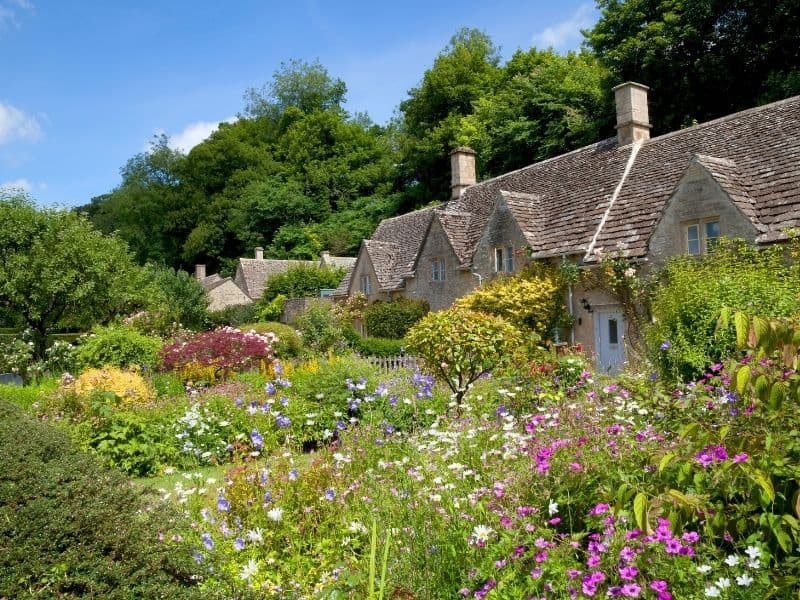
Whether you purchase classic cottage garden flowers from this list or plant an array of random cuttings and divisions collected from friends and neighbors, remember that what really makes an English cottage garden is a hodgepodge of bright flowers planted closely together. It’s a style rather than a formula, and if it evokes feelings of nostalgia and a desire to potter in the garden, you’re on the right track.
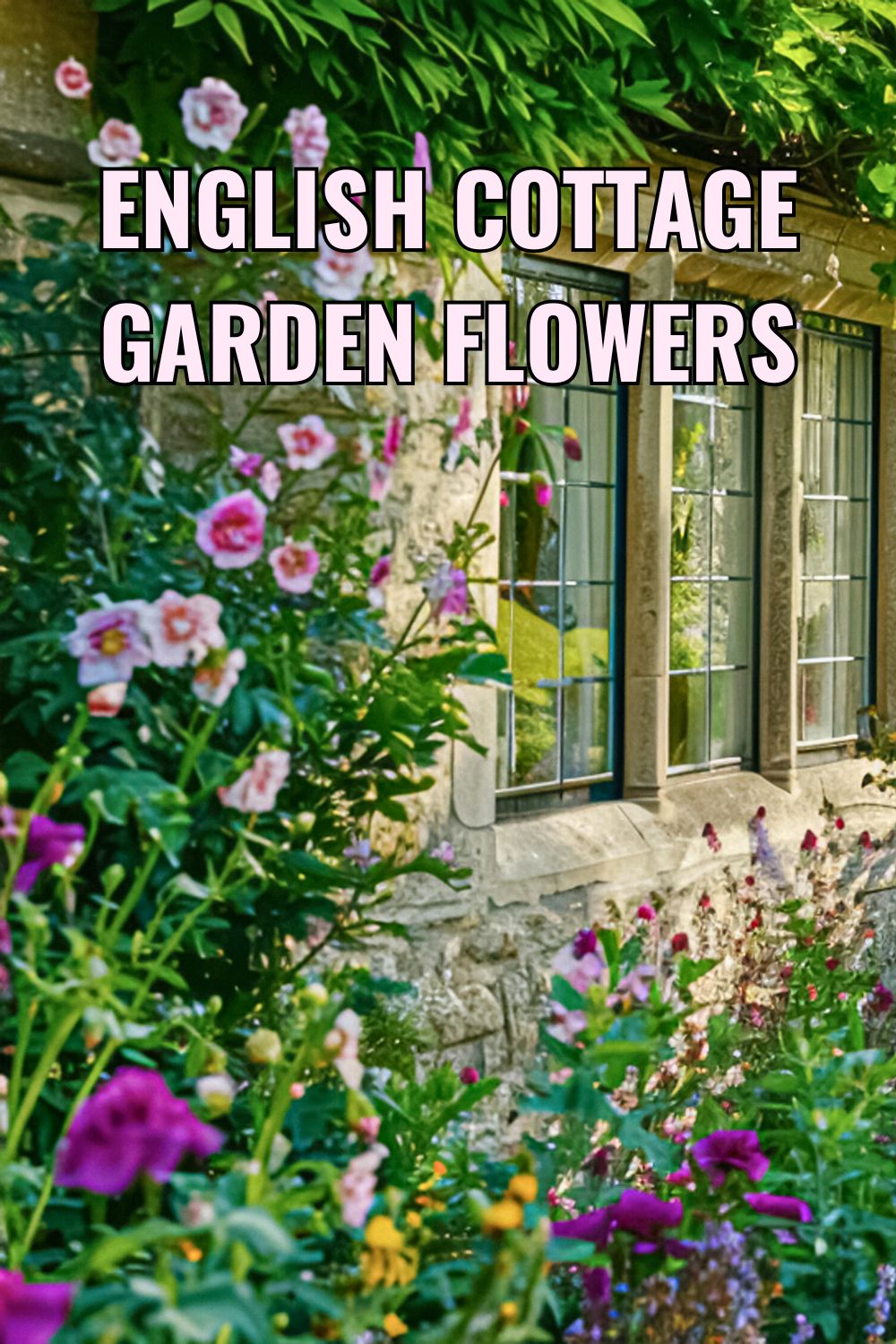

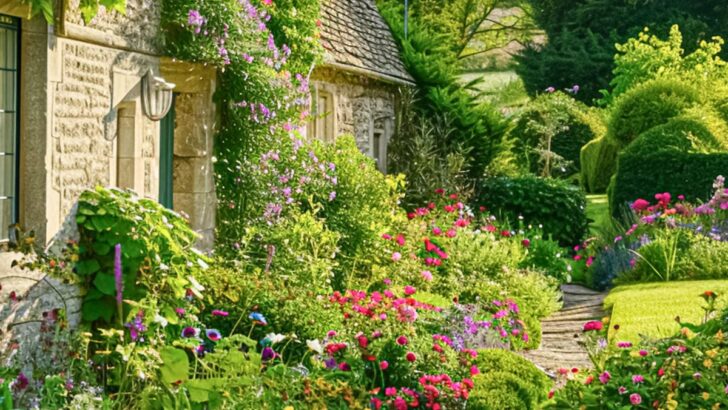


11 Perfect Companion Plants For Petunias (And 5 To Plant Apart)
Tuesday 1st of August 2023
[…] These classic flowers grow well alongside the equally popular and vibrant petunias, adding instant cottage garden charm to any space. Summer snapdragons have a very similar appearance and are also a great option, though […]
17 Incredible Ideas For Landscaping With Hydrangeas In Front Of The House
Thursday 22nd of June 2023
[…] Cottage garden plants: To create a cottage-style garden, incorporate perennials, annuals, and even some decorative elements such as birdhouses or trellises. Contrasting colors and textures will create a striking visual design, and by using low-maintenance plants, you’ll spend less time maintaining your front yard. […]
North Dakota Native Plants List: 12 Amazing Garden Plants
Saturday 10th of June 2023
[…] that attract butterflies and other pollinators. It does really well in flower beds and borders, cottage gardens, and rock gardens. When planted in clusters, it gives a beautiful look to your garden or landscape. […]
How To Create A Spectacular Rose Flower Garden
Saturday 25th of February 2023
[…] These are a cross between old-fashioned and modern roses and are known for their full, fragrant blooms and strong disease resistance. They are a great choice for a cottage-style garden. […]
How To Grow Sage - Everything You Need To Know
Thursday 29th of December 2022
[…] All of these salvias would be great in a cottage garden! […]